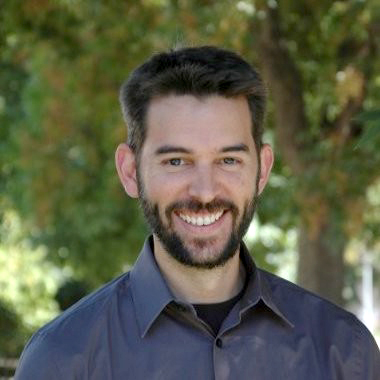
Kyle, tell us a little bit about yourself and your background.
I was planning a career around something nature-oriented, but I saw my college roommate chatting in real time with someone on the west coast through his computer. I thought that was just the coolest thing. So I picked up a network programming book, taught myself how to build networked applications, and started spending all of my free time building open source software: chat systems, games, and more.
Still, I finished my environmental degree and went on to pursue a masters in multivariate environmental modeling, thinking I was a science guy. Eventually a friend convinced me that I should get paid for all of the software development I was doing in my free time, so I submitted my resume to the video games industry, and two weeks later I had a job as a senior game developer working on back end systems.
Years in the games industry taught me what it meant to work on customer products and how to build very high-performance systems (a console or PC game is a collection of very complicated, high performance systems).
My time at PayPal taught me how to work in very high-scale data systems and how to think about highly reliable systems.
What brought you to GLYNT? Why GLYNT?
After leading so many teams at PayPal for the past 10 years, I asked myself what I liked most in my various roles and wanted to do each day to feel satisfied. And the answer was clear: I love working with my teams to envision and build cool things that solve real problems. In fact, at that time I had an engineering team that was building a system not too different from GLYNT, but for a different problem space, and had I told myself that in my next role I wanted to focus more of my time each day on a team and system like that.
Of the various opportunities I was exploring next, GLYNT had that very appealing combination of software engineering, in a data space, and with a team of great people who I immediately knew I’d love working with. It was exactly the sort of thing I had told myself I wanted to be doing in my next role.


You’ve had a lot of experience with data pipelines. Can you define the concept and talk about how it applies at GLYNT?
I’m a software engineer by background, and when I joined the data organization at PayPal, it was immediately clear I wasn’t one of them. It took me a long time to gain acceptance as a data person, it came only after deeply understanding that data and data systems are very different from typical software systems. In a data system, it’s ALL about the data. The software is a means to an end. In a data system, the focus needs to be on what people need from the data, how to produce that from a set of source data through various operations and, above all, ensuring that the data is actually accurate and supports the decisions of the people using it. In its simplest form, a data system produces a useful piece of information from some source data for a decision or process. The “data pipeline” is the various technical steps and logic applied to the source data to ultimately produce the useful information to make a decision. Timeliness and usefulness (including accuracy) are the key measures of success in data pipelines. And this is what GLYNT is doing with documents. It is performing a series of automated, albeit guided, data tasks on documents (the source data) to ultimately create a body of useful information that businesses can use in their business processes. GLYNT is already doing a great job making customers more effective at getting business data from their documents, yet there are so many more data pipeline techniques and technologies and approaches we can bring to bear in this area to give our customers even more useful, accurate, and timely information from their documents in a very easy-to-use tool.GLYNT is a self-service product, which is a game-changer in the documents-to-data market. What do you think about self-service and what makes a successful self-service product?
I’m still learning about the GLYNT customers and their needs, which is critical to me being an effective engineering leader. But a couple of rules are always in my mind.
First, we have to give customers incredibly simple tools and experiences. Every option requires training on how to use that option and invites confusion and error. How can we create the simplest system that a customer can use with minimal training on how to use it?
Second, our system must be bulletproof and streamlined so that everything just works. I’m an advisor to a small company, and they asked for my help designing a customer service team and process to handle all of the users who were contacting them. I told them to focus first on making sure no one ever needed to contact them, and then we’d talk about how to build customer service for the rare customer issue that couldn’t be avoided. They hadn’t seen it that way.
That is how I think about self-service products – the best ones are so streamlined and simple and bulletproof that they don’t require much customer service. Our customers just want useful data from their documents. Our job is to give them the easiest, most effective, and most reliable way to do that.


And finally, what makes you tick as a leader? What about that emotional connection to leadership?
Through various leadership positions I have found myself managing a breadth of teams and organizations, from software engineering to operations to security, and even some non-technical teams.
I tend to approach all of my organizations as an engineer – what is the ultimate goal of the organization, what does success look like, and how should we structure our people, processes, and our systems to achieve that goal and to best serve the customer and the company?
At work, I care deeply about a couple of things: providing really great, high-quality solutions for our customers while motivating and taking excellent care of my teams. Glad to be at GLYNT!
